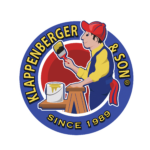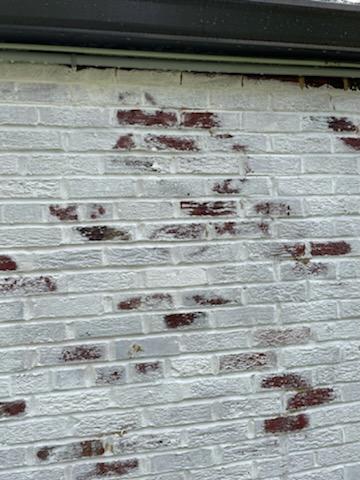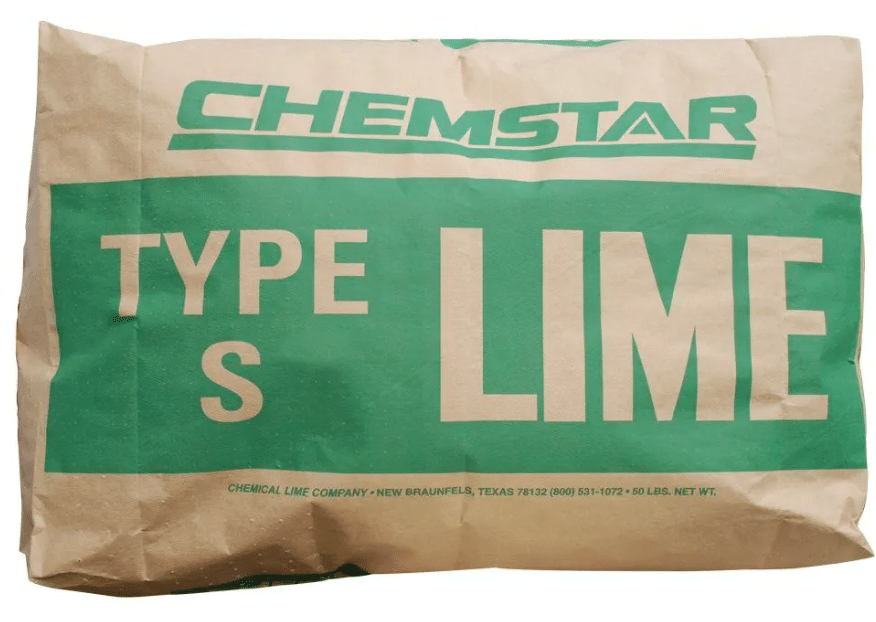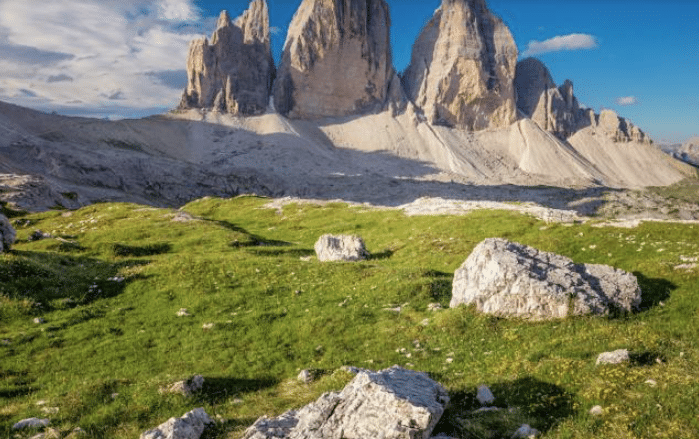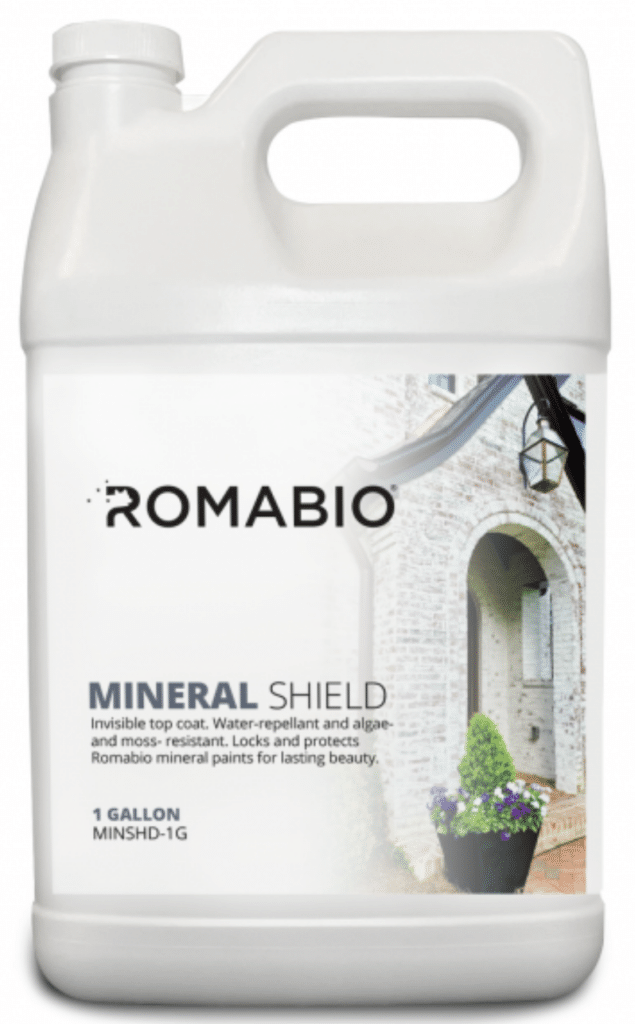

My name is David Klappenberger. I’m the founder of Klappenberger & Son. Today we will talk about painting brick with expert Matt Hocutt of Romabio Classico Lime wash.
Folks, I don’t know if you’ve noticed this, but a lot of people, a lot of homes are getting their brick painted, a lot of commercial buildings are getting painted, at a lot higher rate than it used to be. I remember I painted my first house back in 1995. It was a shocker to paint the brick because it was a no-maintenance thing. And now we’re creating maintenance. Today, the brick is getting painted all the time. What’s interesting is that some paints shouldn’t be applied to bricks, as Matt will explain. These acrylic paints peel off, fade quickly, and have a shorter warranty. On the other hand, Romabio’s mineral paints won’t peel and are fade resistant. Depending on which Romabio product you buy, it can come with a 20-year warranty. Matt Hocutt is here to discuss that with me today. From Romabio: How are you doing, man?

Before we do a deep dive into Romabio Classico Lime wash, could you tell me a little about the company Romabio?
Matt Hocutt: Romabio was founded in 2009.
The owners thought there had to be a better way.
Obviously, brick was being painted prior to Romabio, but much of the paint was not allowing the paint to breathe.
Instead, the brick was sealed, like a layer of plastic on top of the brick.
They wanted to create the proper product for the proper substrate using essentially ancient technology.
To infuse what Europe and Italy have for hundreds of years with some modern assistance to improve longevity.
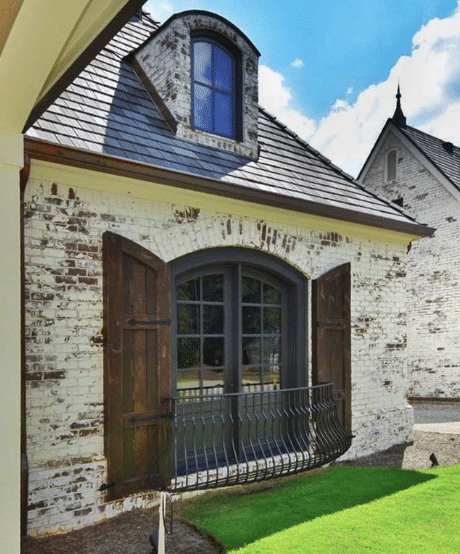
A lot of time was spent working with some chemists over there to educate them on what our substrates are alike and how they differ from theirs. The painting contractors, the homeowner’s desires, and so forth came up with some cool products that we’ve been selling ever since. So, you know, the goal was to bring healthy products that are accurate for the substrate to the marketplace. And that’s what they did.
The Romabio Classico Lime wash is what everybody knows us for. It’s a cool, beautiful, unique product. And we’ve expanded on that ever since because they, the owners of the company, really want to be innovative in the category, which is something that you don’t hear a lot in the painting industry is innovation. We’re excited to go out and be able to take the mineral-based technology from that area and introduce it to the paint products.
“Mineral-based products have many upsides. First, whether you brush or spray, you don’t have to protect the plants. It’s mostly lime, and it rinses off easily without harming the environment. Yes, I still need to tape and plastic windows and other areas to be safe, but there is no harm to the plants or humans.”
Does the Romabio Classico Lime wash fuse to the brick?
Matt Hocutt: This is a unique product. You can describe it as a coating or a penetrating coating, but it does soak into the brick.
Most of the products on the market are film-forming, which sit on top of the substrate. Romabio integrates with the brick. It’s funny: We tell painters to pressure wash, and as soon as they’re done, the Romabio Lime wash can be applied. That’s the beauty of this product. The moisture allows the lime to soak into the brick and bond and become one. So, you’re essentially putting a rock on top of a brick with our product.
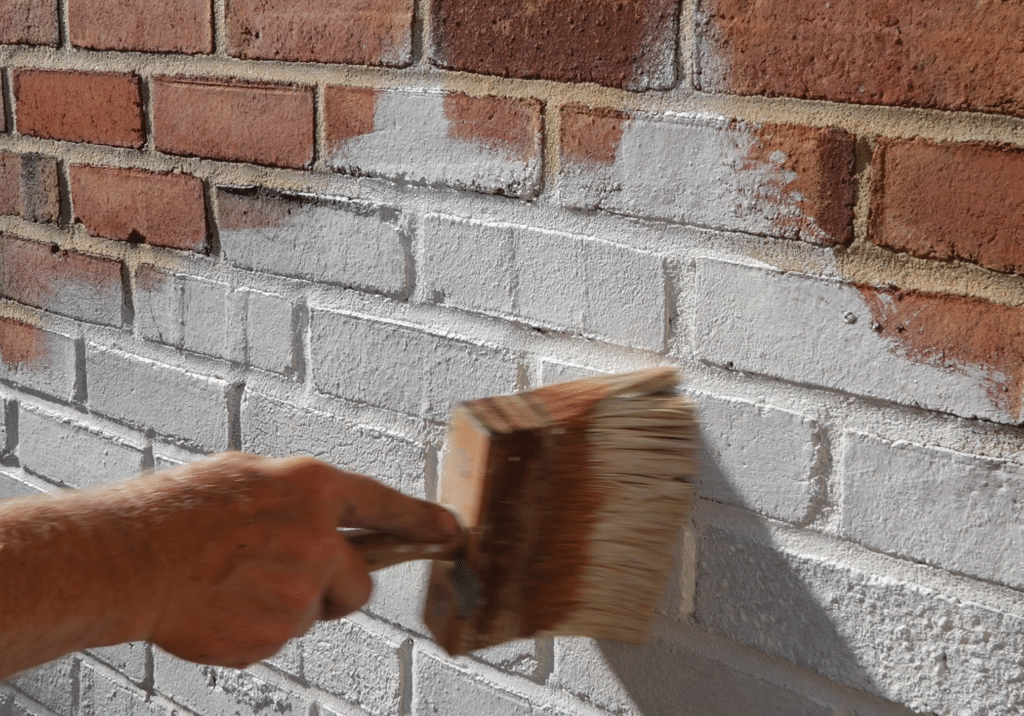
“You’re essentially putting a rock (lime) on top of a brick with our product.”
Does the Romabio Classico have to be rinsed off? Can it be put on as a solid and left alone?
That’s one of the beauties of the product as well. It’s concentrated, so it’s thick, almost like sheetrock mud when you open it up; it’s a very thick product. It comes as a concentrate, and water is added. If you add 40% water, the product will look opaque if not rinsed off. If you add 100% water, you will still be able to see the underlying color of the brick.
So, you know the painter, at that point, is becoming an artist on the home in recreating what the homeowners desire. For the look, the pictures you’ve shown up there have somewhere you can see the brick a lot and somewhere you see very little to none. So, depending on how much water you add to the bucket of Classico, it will affect whether it is full coverage or less than full coverage.
Your personal preference determines your outcome. If you add about 40% water, a thicker application, it’ll be very thick on the substrate and cover the brick. If you go up to a size, you know, 80 To 100%, Then you’ll get a more translucent look and be able to see the tones of the bread coming through.
Where does Romabio get the lime from, Home Depot?
The limes lakes off the Dolomite mountains in northern Italy. We harvest that out of the riverbeds they and it goes through a process. The water is taken out of the lime and then rehydrated with water and some secret sauce. It is now ready to be applied to brick in an infinite number of ways.
So when you look at that paste, when you open up a tub of it, and are you looking at the Dolmite lime that’s been rehydrated or is there other stuff in it as well?
You’re looking at rehydrated dolomite lime, but a few things have been added. A few secret ingredients help the calcification process, which improves durability and holds some of the pigment in place.
Does the Romabio Classico Lime wash come with a warranty?
There are a lot of factors that determine how long it will last. It doesn’t have a warranty because when the person’s applying it, they can add a lot of water, a little water, they can do a ton of distressing, have a very old worn look, or they can do a little bit of distressing and have a solid look. They’ve all got their pros and cons, so the beauty of lime is it’s a living product.
If you were to set a lime rock out on your driveway and water hits it would start to visually in debt because it’s a soft material similar situation on the other side of your home where the rain comes in from it comes from the west of the East that sides probably going to were a little quicker than the other side is protected.
For these reasons, we cannot offer a warranty on Romabio Classico Lime wash, but we do on our Masonry Flat Paint.
What color choices do we have with Romabio Classico Lime wash?
You can choose one of our seven classical colors. In addition, Classico can be custom-tinted; most Benjamin Moore retailers do a great job with this product to be able to create a unique color as well.
Classico Lime wash has a lot of lime in it which prevents it from being tinted to midtones or dark colors.
Is it possible to touch-up the paint after a few years?
It depends on the pigments being used for the product and depends on how thick or how well it was applied.
The thicker the mixture remains, the more millage for protection against sound and UV. The good thing about lime is that it’s relatively easy to touch up. But if you get an area that was applied super thin, you need to match that application when you touch it up. Otherwise, it’s going to look different anyway.
While it’s easy to touch up, it doesn’t need to be done the same way. With the product, you can go corner to corner and try to help blend that in that way as well.
How often should it be applied, and what does it do?
Mineral Shields is a unique product; it doesn’t have silicon, so it’s very flat. It lasts about 3-5 years. It can be applied only to sections, such as the chimney or other problem areas, or an entire wall. You cannot tell the difference between sealed and unsealed areas. It will repel the water away from the brake, tightening the brick’s surface tension so the water won’t penetrate. However, it still allows the brick to breathe naturally. The sealer will also prevent the Lime wash from changing. It doesn’t bridge small cracks but rather seals surfaces., and
